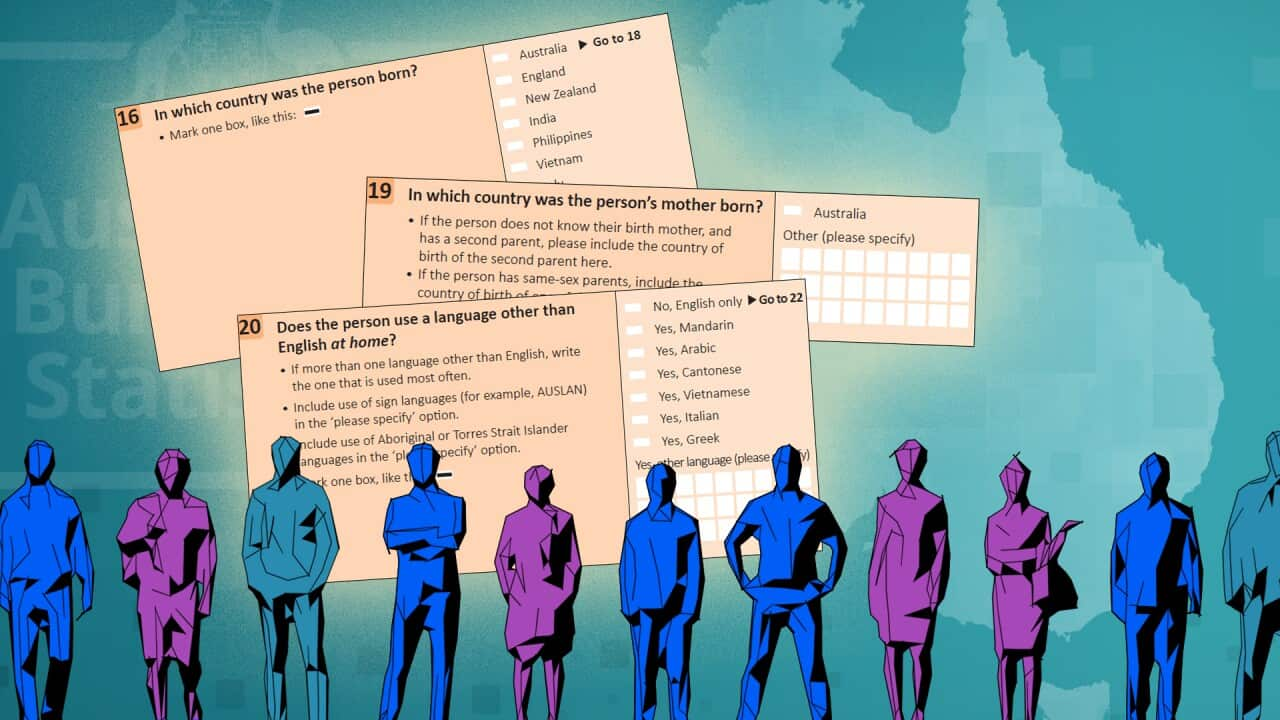Multicultural community leaders have praised Australia’s social and cultural diversity following the release of 2021 Census data showing that nearly half of all Australians are first or second-generation migrants.
The nation’s “growing diversity” presents "incredible opportunities for Australia’s future social, cultural and economic wellbeing”, Australian Multicultural Foundation (AMF) executive director Hass Dellal said.
The Australian Bureau of Statistics (ABS) released its first bundle of population data from the 2021 Census on Tuesday.
The figures revealed that 48.2 per cent of Australians had a parent born overseas, 27.6 per cent were born outside Australia, and 3.2 per cent of the population identified as Aboriginal and Torres Strait Islander.
“This increasingly diverse social and cultural landscape present in the 2021 census is a great strength for Australian society,” Dr Dellal said.
“Now more than ever, we need to ensure Australia’s systems and institutions from healthcare, government services, aged care and educational and employment opportunities are representative, can be equitably accessed and can adequately meet the needs of all Australians.”
The number of people who used a language other than English at home increased by nearly 800,000, rising to over 5.5 million people between 2016 and 2021.
The ABS said the data revealed a "fast-changing, growing and culturally diverse nation".
ANU School of Demography’s Emeritus Professor Peter McDonald said the census data was crucial for understanding and shaping modern Australia.
“We are a multicultural country, it's important to understand the groups that make up a multicultural country, who they are, what particular services they might need,” he said.
“It's vital to understanding ourselves and understanding Australia and what it is.”
India becomes third largest country of birth among Australian residents
The 2021 Census showed that India had moved past China and New Zealand to become the third-largest country of birth among Australian residents, behind Australia and England.
An additional 217,963 Indian-born people became Australian residents between the 2016 and 2021 censuses.
The 2021 Census also confirmed that , with more than 239,000 people using it at home, an increase of over 80 per cent from 2016.
“I think there's been, generally speaking, a bigger acceptance of migrants, including people from Indian backgrounds. And it's great to see that because Australia has always been built on migration,” said Amar Singh, the president of Sikh charitable organisation Turbans 4 Australia.
“And it's good to see people widely accepting other festivals, traditions, cultures, religions, and that's what makes Australia great.”
A multicultural society, in general, brings everyone togetherTurbans 4 Australia president Amar Singh.
Mr Singh said it was important to have infrastructure and services in place to support growing communities.
“To have the community grow in such a large number we need to have the infrastructure for it, community services for support for seniors, for women, for young families, as well, and new arrivals,” he said.
“So just like any other migrant community that grows, that brings some good things with them, but also some issues that come up. But I think that's where integration comes in, and a multicultural society, in general, brings everyone together. So to see the Indian festivals and festivals of all faiths being accepted widely into our norm, it's great to see.”
Nepali-born population more than doubles in size
The second-largest increase in residents by country of birth was Nepal, with an additional 67,752 people from Nepal becoming Australian residents between the 2016 census and 2021 census.
This means Australia’s Nepali-born population has more than doubled since 2016, increasing by 123.7 per cent.
The Nepalese Society of Tasmania’s Khagendra Satyal told SBS News the increase in people coming from Nepal to Australia in recent years has been “really surprising”.
The Australian-Nepali community is “growing really rapidly, and the community is vibrant at the moment,” Mr Satyal said.
He spoke to SBS News from Australia’s first Nepali pub, The Chowk, in Hobart.

The Nepalese Society of Tasmania’s Khagendra Satya. Source: SBS News / Sarah Maunder
The increase in migrants from both Nepal and India has been fuelled largely by international students, Professor McDonald said.
“There's been a huge increase in international students from Nepal and a big increase from India as well. Not that they all stay in Australia, but a reasonable proportion of them do,” Professor McDonald said.
“A lot of the Australian migration system has moved fairly strongly towards recruiting from international students, so the composition of our migrants is dependent upon the composition of international students.”
With additional reporting by Sarah Maunder and Massilia Aili.










